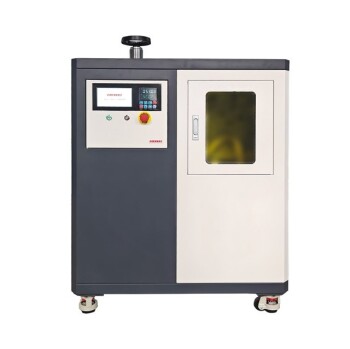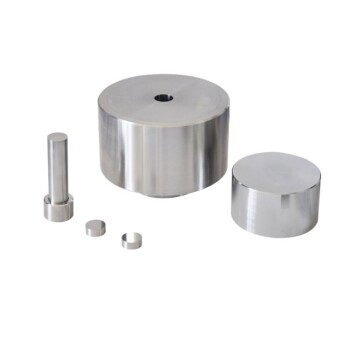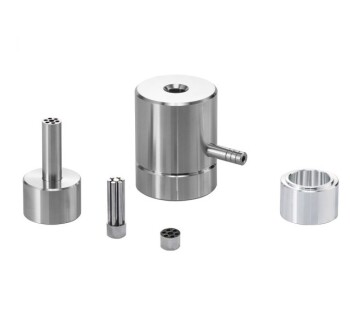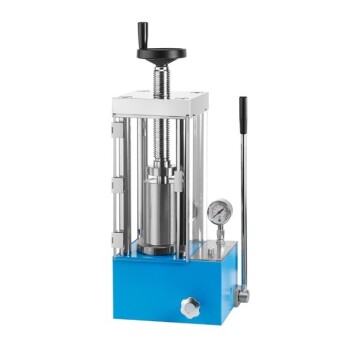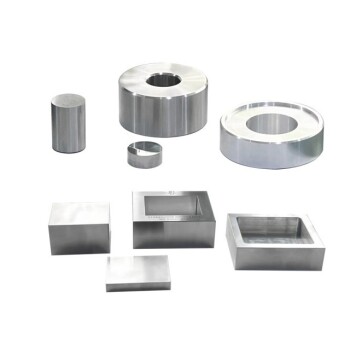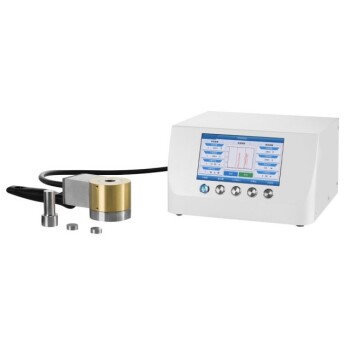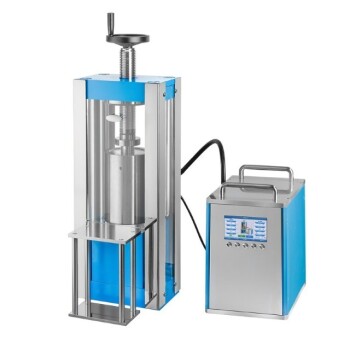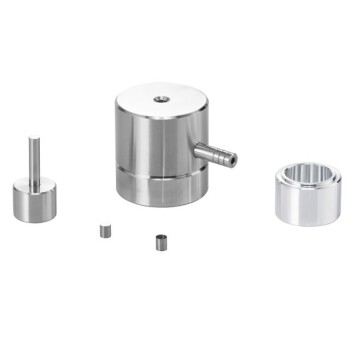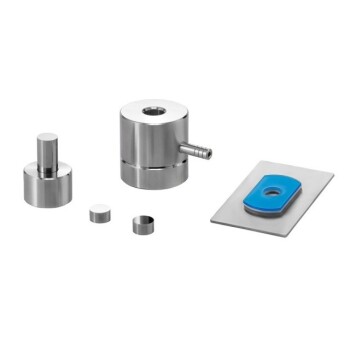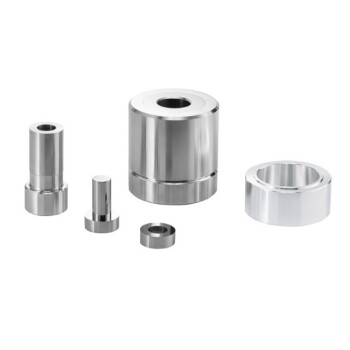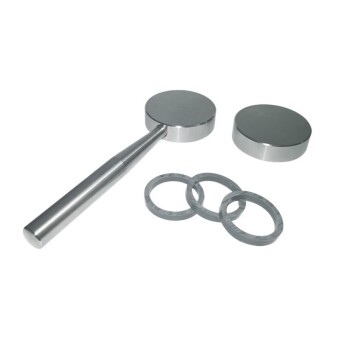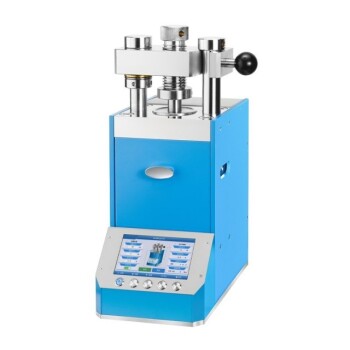At its core, Hot Isostatic Pressing (HIP) is a transformative manufacturing process that uses high pressure and elevated temperature to fundamentally improve a material's properties. Its primary advantages are the elimination of internal porosity to achieve full density, which leads to superior mechanical performance, and the ability to reduce production costs by improving material yield and minimizing downstream processing steps.
The true value of HIP is not just improving a part, but creating a fundamentally new level of material integrity. By simultaneously applying heat and pressure, it squeezes out internal defects, resulting in a component that is as close to theoretically perfect as possible.
The Core Mechanism: How HIP Fundamentally Upgrades Materials
To understand the advantages of HIP, you must first understand its mechanism. The process places a component inside a high-pressure vessel, which is then heated and filled with an inert gas like argon to exert uniform pressure from all directions.
Eliminating Internal Porosity
Almost all materials, especially those made from casting or powder metallurgy, contain microscopic internal voids or pores. These pores are stress concentrators and the primary initiation points for cracks and failures.
HIP subjects the material to a pressure so immense that it causes plastic deformation on a microscopic level. The material's atoms move and diffuse, closing these internal voids completely.
Achieving Up to 100% Theoretical Density
The elimination of porosity directly leads to a denser final part. A component treated with HIP can achieve a density that is over 99.9% of the material's theoretical maximum.
This lack of internal voids ensures that the material's properties are consistent throughout the entire component, with no hidden weak spots.
Creating a Homogeneous Microstructure
The combination of heat and pressure not only closes pores but also promotes diffusion bonding at the granular level. This results in a more uniform and refined grain structure, which is critical for predictable and enhanced mechanical behavior.
Key Advantages in Practice
The fundamental improvements in density and microstructure translate directly into measurable real-world benefits for critical components.
Superior Mechanical Properties
By removing the microscopic defects where failures begin, HIP drastically improves key mechanical properties. This includes significantly increased fatigue life, ductility, impact strength, and fracture toughness.
Parts become more resilient and can withstand more demanding service conditions for longer periods.
Enhanced Performance and Durability
For applications in aerospace, medical implants, or power generation, reliability is non-negotiable. HIP provides a level of quality assurance that is difficult to achieve with other methods.
Components like turbine blades, engine casings, and artificial joints treated with HIP exhibit superior durability and a lower probability of unexpected failure.
Unlocking Advanced Materials
HIP is often the only viable method for consolidating advanced materials. This includes creating fully dense parts from metal powders (powder metallurgy) or bonding dissimilar materials that cannot be welded.
Understanding the Economic and Production Trade-offs
While technically powerful, HIP is not a universal solution. Its benefits must be weighed against its specific production realities.
The Benefit: Reducing Scrap and Improving Yield
HIP can be used to "heal" internal defects in castings that would otherwise be scrapped. Salvaging these high-value components can lead to significant cost savings and dramatically improve production yield.
Furthermore, HIP can create complex, near-net-shape parts from powder, minimizing the raw material needed and reducing subsequent machining waste.
The Caveat: High Initial Investment and Cycle Time
HIP systems represent a significant capital investment. The process itself is also batch-based and can take several hours per cycle.
This makes it less suitable for high-volume, low-cost parts where the ultimate material properties are not a critical requirement.
The Caveat: Surface-Connected Porosity
The HIP process relies on external pressure to close internal voids. It cannot fix defects that are open to the surface, as the pressurizing gas will simply fill the void, preventing it from collapsing.
Is HIP the Right Choice for Your Application?
The decision to use HIP depends entirely on your primary goal, balancing performance requirements against cost.
- If your primary focus is maximum reliability and performance: Use HIP for mission-critical components where failure could be catastrophic, such as in aerospace or medical implants.
- If your primary focus is cost reduction for high-value parts: Use HIP to salvage castings with internal defects or to manufacture complex near-net-shape parts to minimize machining.
- If your primary focus is working with advanced or non-weldable materials: Use HIP for powder metallurgy consolidation or diffusion bonding to create components that are otherwise impossible to manufacture.
Ultimately, adopting HIP is a strategic decision to prioritize ultimate material integrity and performance above all else.
Summary Table:
| Advantage | Key Benefit |
|---|---|
| Eliminates Internal Porosity | Achieves up to 100% theoretical density, reducing failure risks |
| Superior Mechanical Properties | Increases fatigue life, ductility, and fracture toughness |
| Cost Reduction | Improves yield, salvages scrap, and minimizes machining waste |
| Homogeneous Microstructure | Ensures uniform material properties and enhanced durability |
| Unlocks Advanced Materials | Enables powder metallurgy and bonding of dissimilar materials |
Ready to elevate your material performance with HIP technology? KINTEK specializes in lab press machines, including isostatic presses, to help you achieve superior density and reliability for critical components in aerospace, medical, and industrial sectors. Contact us today to discuss how our solutions can reduce costs and enhance your lab's capabilities!
Visual Guide
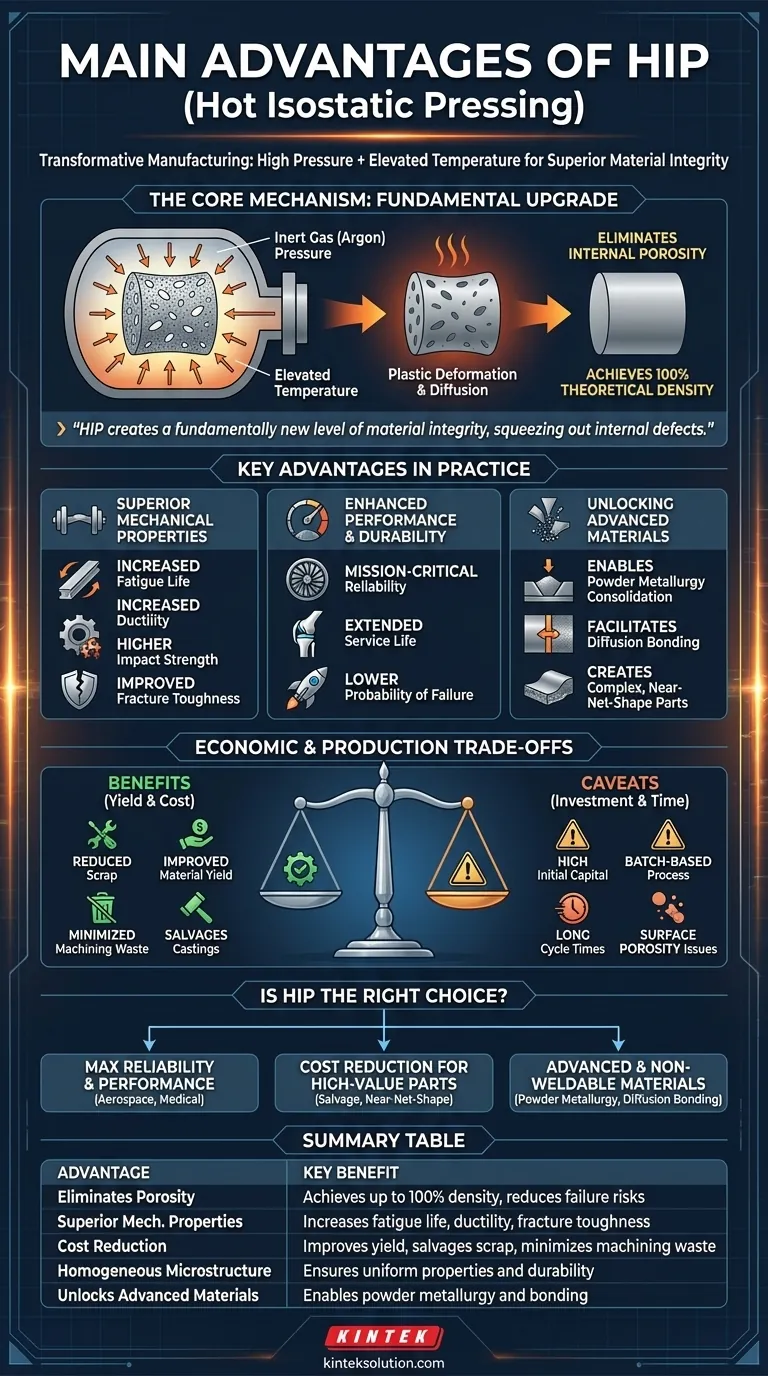
Related Products
- Warm Isostatic Press for Solid State Battery Research Warm Isostatic Press
- Automatic High Temperature Heated Hydraulic Press Machine with Heated Plates for Lab
- Laboratory Manual Heated Hydraulic Press Machine with Hot Plates
- Automatic Heated Hydraulic Press Machine with Heated Plates for Laboratory
- Split Automatic Heated Hydraulic Press Machine with Heated Plates
People Also Ask
- What is Pascal's Law and how is it defined? Unlock the Power of Hydraulic Force Multiplication
- Why is Hot Isostatic Pressing (HIP) less suitable for high-volume production? Slow batch process limits throughput
- In which industries is Hot Isostatic Pressing (HIP) commonly used? Boost Component Reliability in Aerospace, Medical, and More
- How does HIP repair internal defects in materials? Achieve Perfect Material Integrity with HIP
- What are the energy efficiency and safety benefits of isostatic presses? Boost Your Lab's Performance with Uniform Pressure
